25 College Football Stadiums Known For Their Unmatched Energy
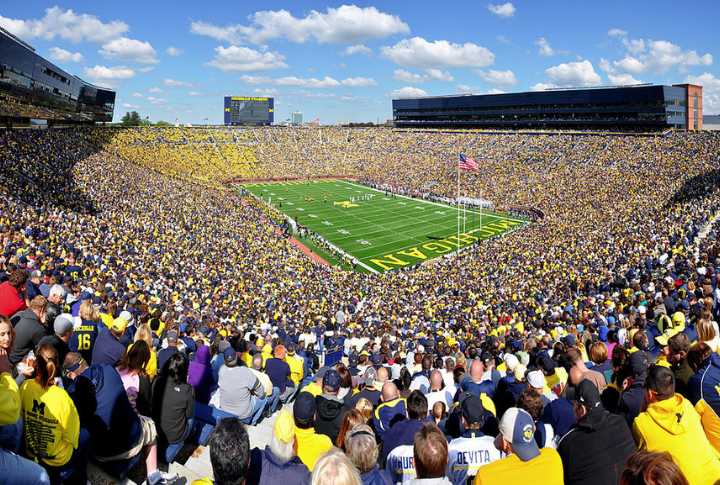
College football stadiums not only serve as sports venues; they are the heartbeats of their universities, where tradition and raw energy collide to create unforgettable game-day experiences. These stadiums serve as the battlegrounds for legendary rivalries, with tens of thousands of fans chanting for their team. Here are 25 college stadiums where game days are nothing short of pure madness.
Davis Wade Stadium: Mississippi State
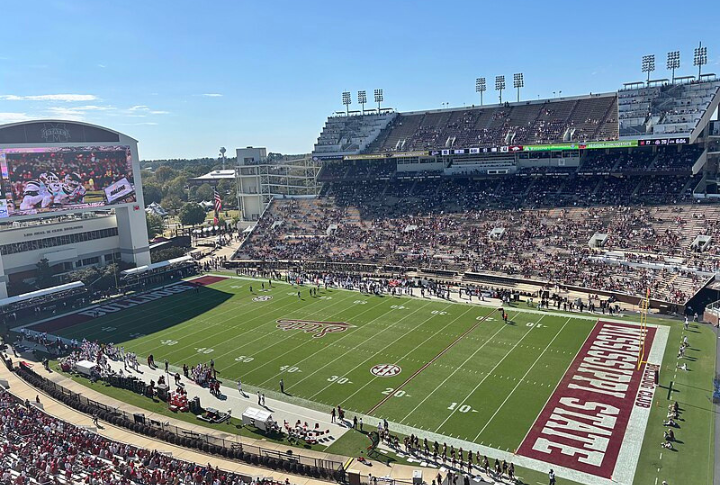
This is one of the loudest stadiums in college football, thanks to the unique and deafening tradition of ringing cowbells. The 61,311-seat venue may not be the largest, but the noise level rivals that of much bigger stadiums. Fans bring metal cowbells, creating an intimidating sound that echoes throughout the stadium.
LaVell Edwards Stadium: Brigham Young University

Located in Provo, Utah, LaVell Edwards Stadium is home to the BYU Cougars. Its 63,470 capacity becomes a roaring fortress on game days. The high-altitude location at nearly 4,600 feet above sea level gives BYU a unique home-field advantage, making it tough for visiting teams unaccustomed to the thinner air.
Michigan Stadium: University Of Michigan
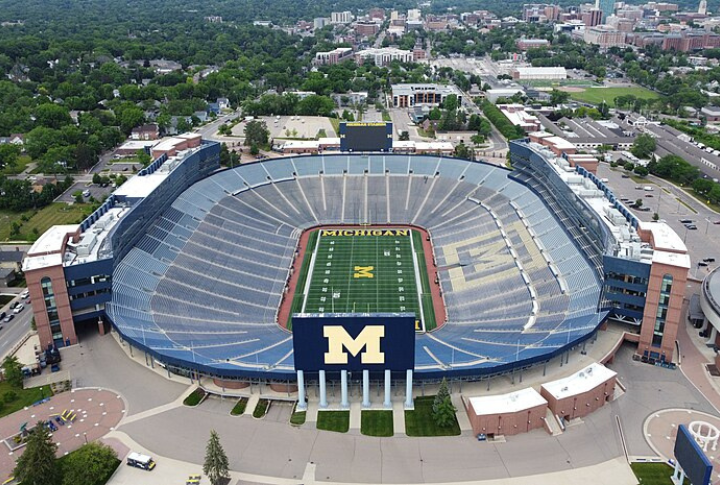
Michigan Stadium, also called “The Big House,” is America’s largest stadium and the second-largest in the world. Located in Ann Arbor, it has been the home of the University of Michigan Wolverines since 1927. On game days, the sea of maize and blue creates an intimidating environment for opponents.
Beaver Stadium: Penn State University
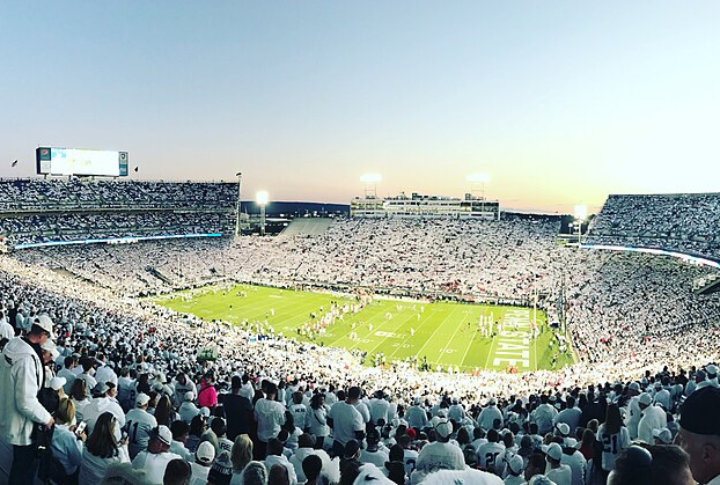
As the home stadium of the Penn State Nittany Lions, Beaver Stadium has a staggering seating capacity of over 106,000. The stadium is popular for the “White Out” game, where fans create an intimidating sea of white. Since its opening in 1960, the stadium has expanded multiple times and undergone several modernizations.
Ohio Stadium: Ohio State University
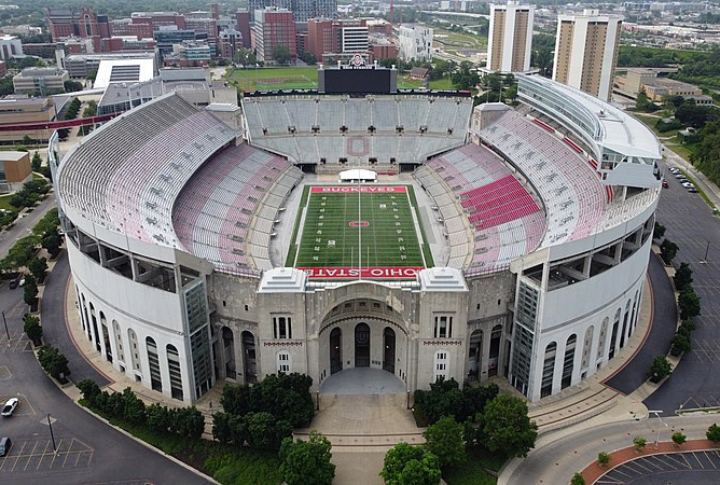
“The Horseshoe,” another name for the Ohio Stadium, is the home of the Ohio State Buckeyes. Opened in 1922, the stadium has witnessed countless historic college football moments, including numerous Big Ten championships and national title runs. Game days in Columbus are characterized by fans chanting “O-H-I-O” in unison.
Tiger Stadium: Louisiana State University
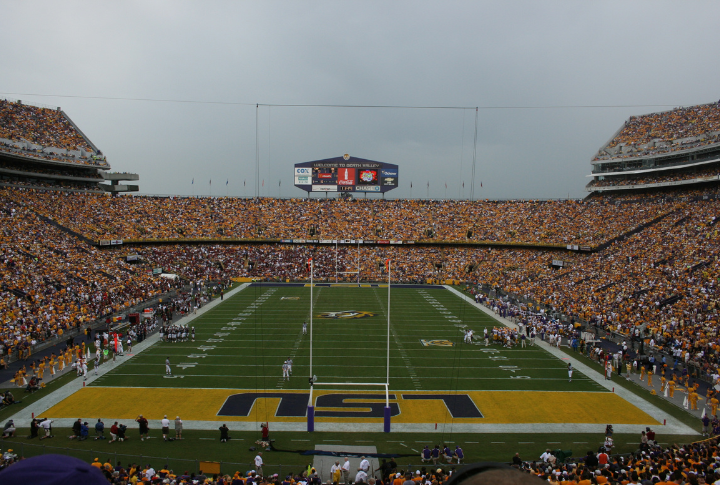
With a capacity of over 102,000, Tiger Stadium is one of the largest sports facilities in the NCAA. A famous moment in Tiger Stadium history occurred in 1988 when LSU’s last-minute touchdown against Auburn caused such a loud crowd reaction that it registered as an earthquake on a seismograph.
Kyle Field: Texas A&M University
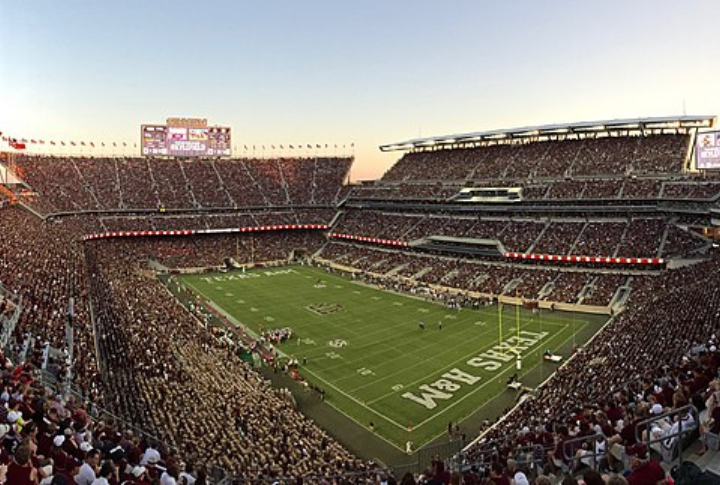
This stadium ranks among the largest stadiums in the US and has a current capacity of 102,733. The 12th Man tradition, where students stand the entire game to symbolize their support for the team, creates a deafening roar. Another unique feature is the Midnight Yell, a late-night pep rally before home games.
Williams Stadium: Liberty University

Though not as massive as some Power Five stadiums, Williams Stadium at Liberty University has quickly become one of the most intense game-day environments in college football. With recent expansions bringing the capacity to 25,000, the stadium is packed with Flames fans who create an intimidating atmosphere for visiting teams.
Neyland Stadium: University Of Tennessee

Neyland’s game-day atmosphere is highlighted by the “Vol Walk,” where thousands of fans line Peyton Manning Pass and Phillip Fulmer Way to cheer on the team as they enter the stadium. Inside, the crowd erupts with the sounds of “Rocky Top,” the school’s beloved fight song, played relentlessly by the Pride of the Southland Band.
Bryant-Denny Stadium: University Of Alabama
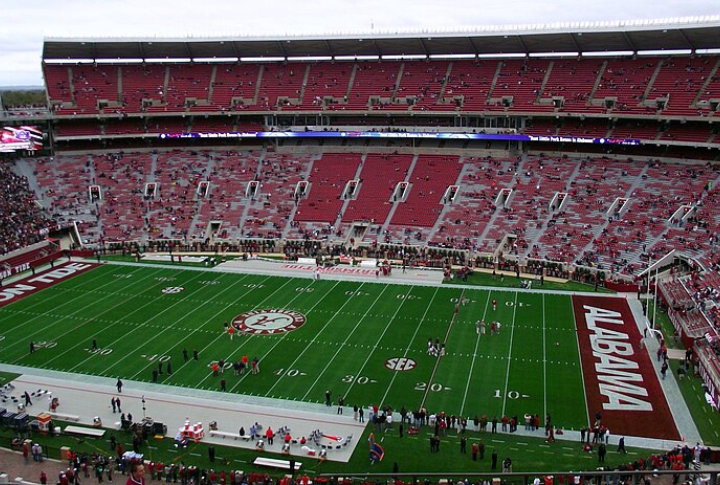
Bryant-Denny Stadium, home to the University of Alabama’s Crimson Tide, has a seating capacity of over 100,000. The stadium features one of the largest video boards in college football. It also features the “Lighting Up Bryant-Denny” moment, where fans use their phone flashlights to illuminate the night sky, creating an unforgettable visual spectacle.
Darrell K Royal-Texas Memorial Stadium: University Of Texas

A unique tradition at Darrell K Royal-Texas Memorial Stadium is lighting the massive, 100-foot-tall Godzillatron scoreboard, one of the largest in college football. The stadium also honors military veterans, reflecting its original name, Texas Memorial Stadium, and its deep connection to those who served.
Jordan-Hare Stadium: Auburn University
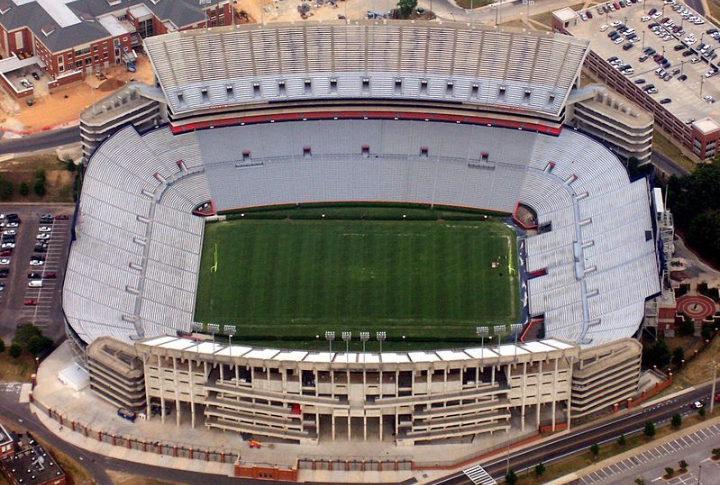
As one of the largest stadiums in the Southeastern Conference, Jordan-Hare Stadium has a capacity of over 87,000 fans. It is particularly known for Auburn’s “War Eagle” battle cry, where a live eagle soars over the field before kickoff. Jordan-Hare Stadium hosted the first-ever Iron Bowl played on a college campus in 1989.
Ben Hill Griffin Stadium: University Of Florida
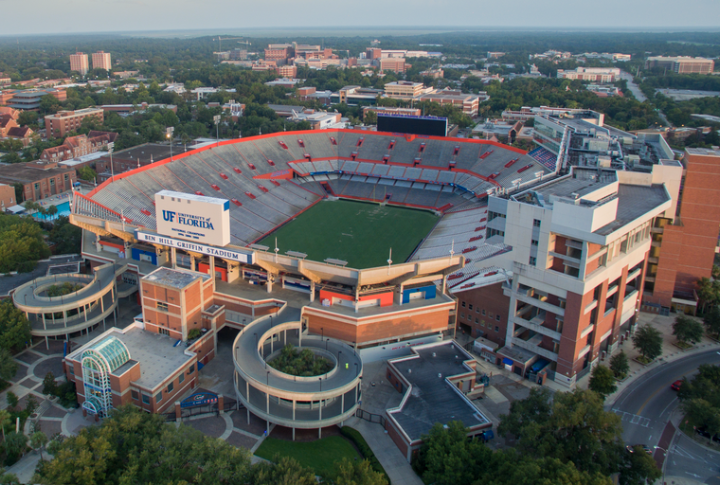
With a capacity of over 88,000, this stadium has been the backdrop for legendary moments, including Tim Tebow’s 2007 Heisman-winning season and several SEC championship runs. Its natural bowl-like design helps keep the field cooler, even in intense heat. Fans amplify the energy with traditions like the Gator Chomp, timed to the rhythm of the “Jaws” theme.
Memorial Stadium: Clemson University

The atmosphere at Memorial Stadium, also known as “Death Valley,” is so intense it rattles opposing teams. The stadium has recorded noise levels surpassing 130 decibels, adding to its legendary reputation. Clemson enjoys an impressive home winning record at the venue, with many undefeated seasons fueled by the electric energy of game days. In addition to football, Memorial Stadium also hosts major concerts and events.
Camp Randall Stadium: University Of Wisconsin

Opened in 1917, Camp Randall Stadium stands on a site that once served as a training camp for soldiers. With a capacity of over 75,000, the stadium erupts with energy on game days. During the famous “Jump Around” tradition before the fourth quarter, fans bounce to House of Pain’s 1992 hit.
Autzen Stadium: University Of Oregon
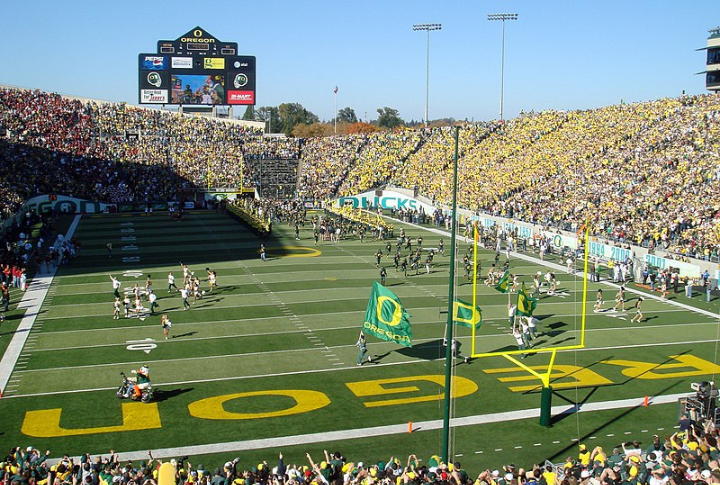
The stadium opened in 1967 and has consistently exceeded that number due to standing-room attendees, sometimes surpassing 60,000 fans. Its unique bowl-shaped design and aluminum seating enhance the acoustics. Autzen Stadium has also served as a filming location, appearing in movies like National Lampoon’s “Animal House.”
Lane Stadium: Virginia Tech

Lane Stadium is named after Edward H. Lane, a former board member and key donor to its construction. Multiple renovations have been carried out to enhance the fan experience. The Hokie Stone—a distinctive limestone found in the region—adorns parts of the stadium, tying it to the university’s architectural identity.
Williams-Brice Stadium: University Of South Carolina

Williams-Brice is unique in its location. Unlike many major college stadiums on campus, it is about two miles from the university. The tradition of playing “Sandstorm” energizes fans to a frenzied level. Over the years, Williams-Bruce has hosted high-profile matchups, concerts, and even a visit from Pope John Paul II in 1987.
Kinnick Stadium: University Of Iowa
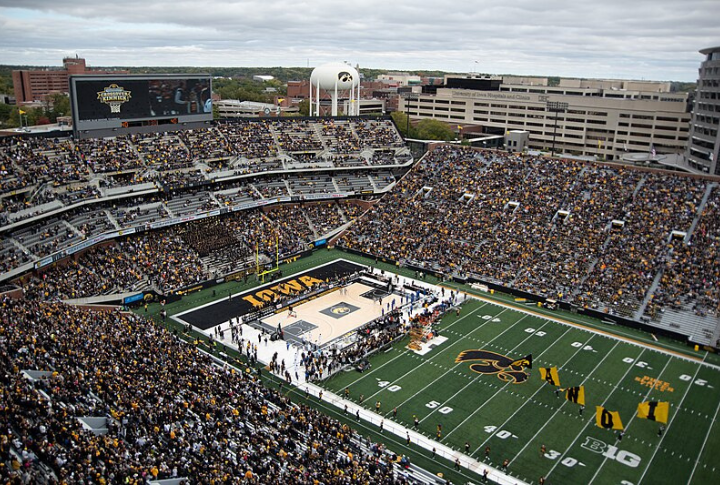
During its 1929 launch, this facility was known as Iowa Stadium. However, it was later renamed in 1972 to honor Nile Kinnick, the 1939 Heisman Trophy winner who tragically passed during WWII. Kinnick Stadium is also known for its daunting home-field advantage, with its tight sidelines bringing fans closer to the action.
Spartan Stadium: Michigan State University
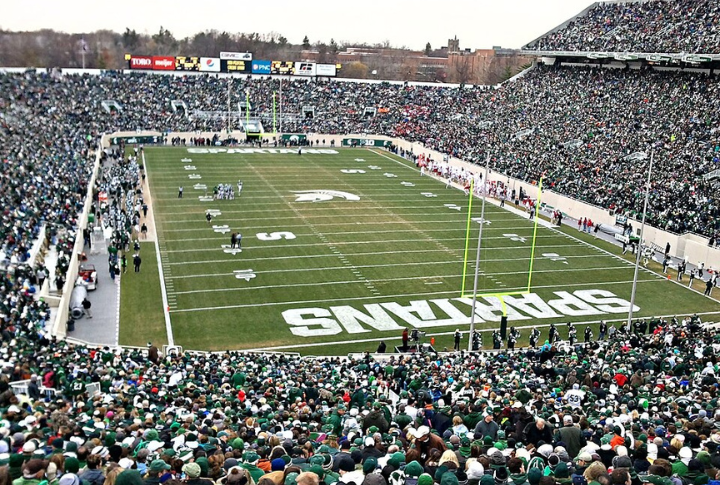
Spartan Stadium is known for its natural grass field, which was temporarily replaced with artificial turf in 1969 but was restored to grass in 2002 to preserve a traditional playing surface. The stadium has witnessed unforgettable moments, including the iconic 1966 “Game of the Century” against Notre Dame, which ended in a 10-10 tie.
Doak Campbell Stadium: Florida State University

Home to the Florida State University Seminoles, Doak Campbell Stadium opened in 1950 with a capacity of just 15,000. Its current capacity is over 79,500 seats. Though the stadium is named after FSU’s first president, Doak S. Campbell, the field itself honors legendary coach Bobby Bowden.
Husky Stadium: University Of Washington
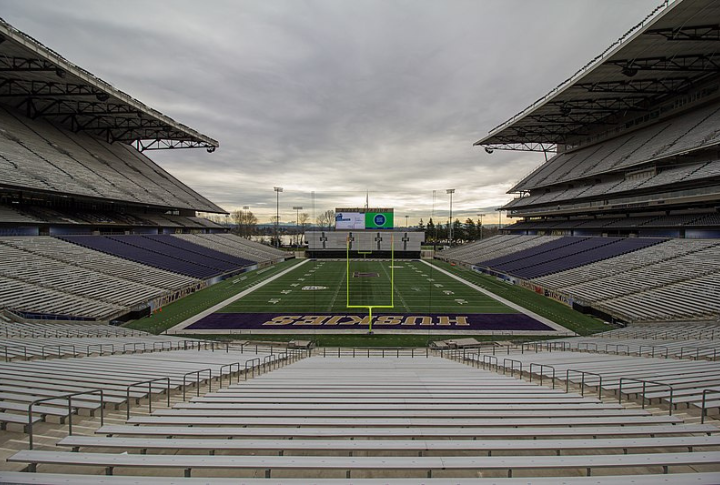
This 70,000-capacity stadium is designed to amplify crowd noise, giving the Huskies one of the loudest home-field advantages in the NCAA. Interestingly, it was the site of the world’s first televised football game in 1939 and has hosted several major events, including NFL games and a visit from President Warren G. Harding in 1923.
Gaylord Family Oklahoma Memorial Stadium: University Of Oklahoma
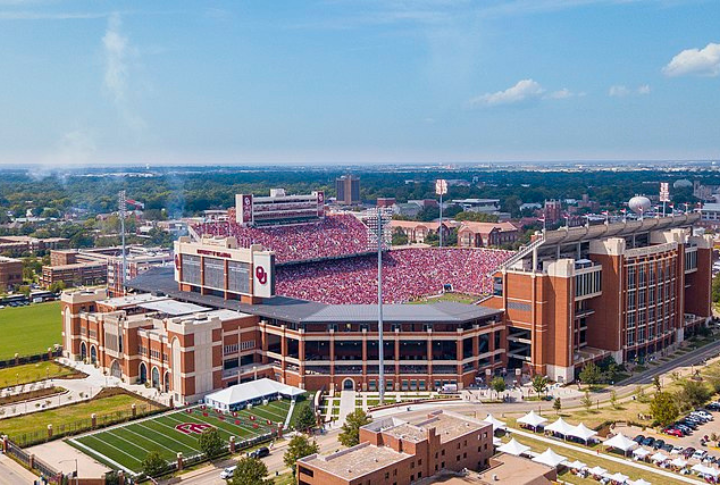
The stadium features a striking red-brick facade, complementing the University of Oklahoma’s architectural style. It is also known for its state-of-the-art facilities, including the Barry Switzer Center, which houses training and medical areas. This sports complex is named in honor of the Gaylord family, who have been longtime supporters of the university.
Faurot Field at Memorial Stadium: University Of Missouri
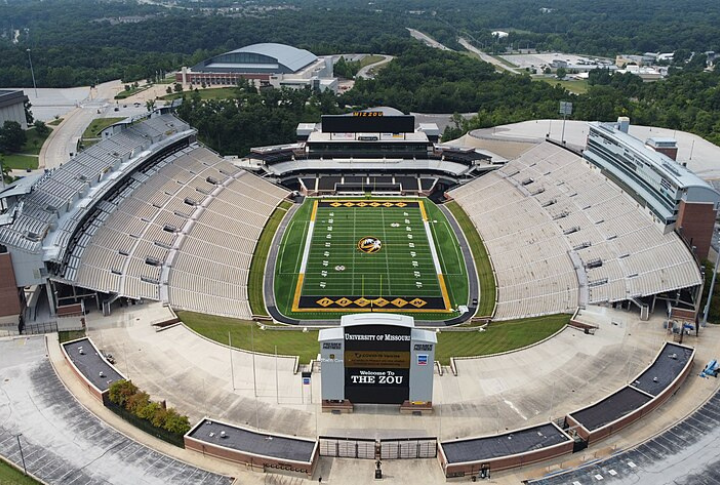
A prominent feature of Faurot Field is the “Rock M,” a large whitewashed stone formation on the north end zone hill. Originally built in 1927, the structure remains a cherished school tradition. Since its establishment in 1926, this stadium has been home to the Missouri Tigers football team.
Ross-Ade Stadium: Purdue University

Purdue is known as the “Cradle of Quarterbacks,” as it has produced elite passers like Bob Griese, who all honed their skills at Ross-Ade. Boilermaker fans are among the most dedicated in college football, packing the stands in black and gold, especially for rivalry games like the Old Oaken Bucket clash against Indiana.
Albertsons Stadium: Boise State University
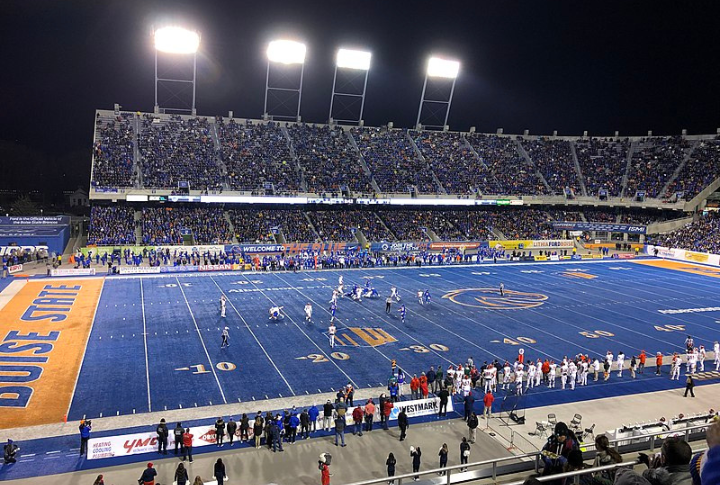
A distinct feature of this stadium is its blue turf, nicknamed “The Smurf Turf.” Installed in 1986, Boise State became the first college team to play on a non-green field, a tradition that has since become synonymous with the program’s identity. The stadium, first called Bronco Stadium, was renamed Albersons Stadium in 2014.
Boone Pickens Stadium: Oklahoma State University

This is the oldest stadium in the Big 12 Conference, featuring a seating capacity of over 55,000. The facility was first called Lewis Field but was renamed in 2003 after alumnus and oil tycoon Boone Pickens. Its seating arrangement is unique, with the crowd sitting almost directly on the field.
Folsom Field: University Of Colorado

Since 1924, Folsom Field has been the home of the University of Colorado Buffaloes. The stadium has been the stage for some of college football’s most unforgettable moments, including the Buffaloes’ 62-36 upset of Nebraska in 2001. CU fans, known for their unwavering loyalty, pack the stands in black and gold at every game.


